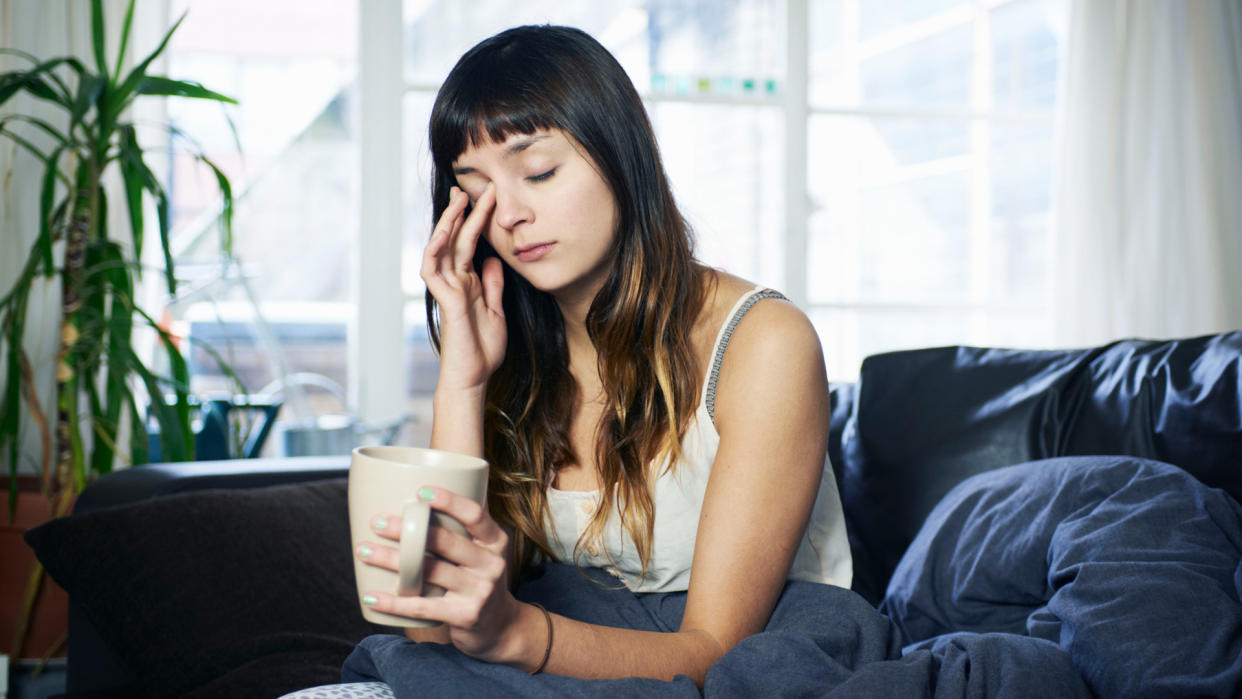Hypersomnia: Symptoms, causes and treatments

Sleep is essential for a person’s health, and people who feel tired on occasion often boost their energy levels by taking a nap or ensuring restful shut-eye the next evening. But when sleep doesn't relieve the exhaustion, it could be a sign of hypersomnia.
Hypersomnia is a chronic condition characterized by episodes of excessive daytime sleepiness or prolonged nighttime sleep (over 11 hours), according to the National Institute of Neurological Disorders and Stroke (NINDS). This disorder can be rooted in neurological disruptions, or it can be a result of poor sleep hygiene and other lifestyle factors.
It is not known exactly how many people experience excessive sleepiness, but Dr. Abhinav Singh, medical director of the Indiana Sleep Center, told Live Science that hypersomnia appears to be a relatively common condition, affecting between 10% to 20% of adults around the world.
Dr. Anita Raja, a general practitioner in the U.K., told Live Science that symptoms of hypersomnia should not be brushed off. "They can have an adverse effect on our mood, concentration, relationships and energy levels," she said. "If you are feeling fatigued during the day despite a good night's sleep, or regularly napping during the day but still feeling tired, please speak to a medical professional."
Hypersomnia: Symptoms
The term hypersomnia is often used interchangeably with excessive daytime sleepiness, or hypersomnolence.
Individuals with hypersomnia find it difficult to wake up, and they feel the need to nap repeatedly throughout the day. In addition, sleep doesn’t tend to relieve feelings of exhaustion and sleepiness.
"People with this condition may sleep for 11 hours at night, but they still feel fatigued during the day," Raja said.
According to the NINDS, other symptoms of hypersomnia may include:
Anxiety
Irritability
Low energy levels
Restlessness
Slow speech
Loss of appetite
Hallucinations
Memory problems
Not being able to function in social, occupational or other settings
Hypersomnia is not a life-threatening condition, according to the NINDS, but it can lead to serious consequences, including accidents caused by falling asleep while driving.
Hyposomnia: Causes
Hypersomnia can be a symptom of many different medical conditions, and healthcare practitioners often classify the disorder as either primary or secondary, depending on the underlying cause.
According to the Sleep Foundation, a nonprofit organization in the U.S., hypersomnia is classified as primary when it occurs on its own and is not caused by t another known condition or factor. Secondary hypersomnia is when the disorder is due to other medical conditions, medications, substances, psychiatric disorders or insufficient sleep.
Secondary hypersomnia
The most common reason for hypersomnia is acute or chronic sleep loss, Singh said. When a person persistently fails to get enough sleep, they may develop an insufficient sleep syndrome. This condition often develops as a result of poor sleep hygiene.
"Shift workers like doctors, nurses and carers usually suffer from poor quality of sleep," Raja said. "That is because their circadian rhythm — the brain's internal natural way of regulating the sleep cycle — is disturbed due to night shifts. Your body is designed to compensate for sleep loss. If the quality of sleep is insufficient during the night, your brain would like to catch up during the day."
Hypersomnia is often secondary to or a symptom of another medical condition. Excessive sleepiness may particularly develop as a result of hypothyroidism, brain injuries and diseases of the nervous system, such as Parkinson's disease, epilepsy and multiple sclerosis.
Excessive sleepiness may also be an effect of certain sedating medications, excessive alcohol use or withdrawing from stimulant drugs, according to the Sleep Foundation.

Primary hypersomnia
According to the National Institute of Neurological Disorders and Stroke (NINDS), primary hypersomnia disorders include:
Narcolepsy type 1
Narcolepsy type 2
Kleine-Levin syndrome
Idiopathic hypersomnia
Narcolepsy type 1 is a chronic neurological disorder. This condition is caused by low levels of orexin — neurotransmitters central to the regulation of wakefulness, appetite and arousal. The main symptoms of narcolepsy type 1 include hypersomnia, cataplexy (sudden muscle weakness), sleep paralysis and hallucinations.
Narcolepsy type 2 shares many of the same symptoms as type 1, with the exception of cataplexy. It is not triggered by low amounts of orexin, and the exact causes of this condition are unknown.
Kleine-Levin syndrome is a rare neurological disorder characterized by recurring episodes of hypersomnia as well as mental and behavioral disturbances. This condition primarily affects young males, and episodes often decrease over a period of eight to 12 years.
Idiopathic hypersomnia is characterized by excessive sleepiness without experiencing sudden muscle weakness. The exact causes of this condition are unknown, but they may be linked to neurotransmitter disruptions and predisposing genetic factors.
Hyposomnia: Diagnosis
According to the Sleep Foundation, idiopathic hypersomnia appears to be a relatively rare condition, though its exact prevalence is difficult to determine.. Symptoms often appear in a person's teens or early 20s, but they can begin at any age. Idiopathic hypersomnia is diagnosed after ruling out any secondary causes of excessive sleepiness.
According to the Hypersomnia Foundation, idiopathic hypersomnia can be diagnosed when the following conditions are present:
Daily periods of excessive sleepiness or daytime lapses into sleep for at least three months
No evidence of cataplexy (sudden loss of muscle tone triggered by strong emotions) or sudden muscle weakness
Results from a multiple sleep latency test (MSLT) show a sleep latency (time taken to fall asleep) of less than 8 minutes or a total sleep time of 11 or more hours
Hypersomnia due to insufficient sleep syndrome, medical conditions, medications, substances or psychiatric disorders is ruled out
Hyposomnia: Treatment
Treatment for hypersomnia depends on the cause of the disorder, according to the NINDS. For example, idiopathic hypersomnia may be treated with a drug called Xywav — the only Food and Drug Administration-approved treatment, thought to work during sleep to help with symptoms during the day — or stimulants like amphetamine, methylphenidate and modafinil.
Treatment can also involve non-drug options. "For primary hypersomnias, short naps along with caffeine can help increase wakefulness," Singh said.
Patients with hypersomnia are often advised to modify their lifestyle in ways that minimize any disruptions to their sleep cycle. They may be asked to avoid night work or reduce their alcohol intake. Keeping a healthy weight, eating a healthy, balanced diet, meditating and practicing yoga are other ways to cope with excessive daytime sleepiness, Raja said.
Additional resources
Find out more at the Hypersomnia Foundation
Cleveland Clinic: Hyposomnia